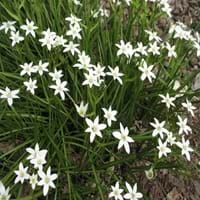Life Span
Biennial
Perennial
Type
Perennial
Bulb or Corm or Tuber
Origin
Texas
Eastern Europe, Southern Europe, Turkey
Types
Not available
Not Available
Habitat
Forests, meadows, Pastures, Prairies, savannahs, Woodland edges
Cultivated Beds, meadows
USDA Hardiness Zone
8-10
5-8
Sunset Zone
H1, 8, 9, 12, 13, 14, 15, 16, 17, 18, 19, 20, 21, 22, 23, 24
21,22
Habit
Upright/Erect
Clump-Forming
Flower Color
White, Lemon yellow, Light Pink
White, Light Green, Silver
Flower Color Modifier
Bicolor
Bicolor
Fruit Color
Tan
Not Available
Leaf Color in Spring
Green
Green
Leaf Color in Summer
Green
Light Green
Leaf Color in Fall
Not Available
Several shades of Green
Leaf Color in Winter
Light Green
Light Green
Leaf Shape
Alternate
Oblong-lanceolate
Plant Season
Spring, Summer
Spring
Sunlight
Full Sun, Partial Sun
Full Sun, Partial Sun, Partial shade
Type of Soil
Loam, Sand
Clay, Loam, Sand
The pH of Soil
Neutral, Alkaline
Acidic, Neutral, Alkaline
Soil Drainage
Well drained
Well drained
Bloom Time
Early Spring, Spring, Late Spring, Early Summer, Late Winter
Early Spring, Spring
Tolerances
Drought
Drought
Where to Plant?
Container, Ground, Pot
Container, Ground, Pot
How to Plant?
Seedlings
Seedlings
Plant Maintenance
Medium
Medium
Watering Requirements
Average Water Needs, Do Not over Water, Keep the Soil well drained, Requires regular watering
Average Water Needs
In Summer
Lots of watering
Lots of watering
In Spring
Moderate
Moderate
In Winter
Average Water
Average Water
Soil pH
Neutral, Alkaline
Acidic, Neutral, Alkaline
Soil Type
Loam, Sand
Clay, Loam, Sand
Soil Drainage Capacity
Well drained
Well drained
Sun Exposure
Full Sun, Partial Sun
Full Sun, Partial Sun, Partial shade
Pruning
Remove damaged leaves, Remove dead branches, Remove dead leaves
No pruning needed
Fertilizers
All-Purpose Liquid Fertilizer
Water soluble fertilizers
Pests and Diseases
Pests and diseases free, Red blotch
No serious insect or disease problems
Plant Tolerance
Drought
Drought
Flower Petal Number
Single
Single
Foliage Texture
Medium
Medium
Foliage Sheen
Matte
Glossy
Attracts
Bugs, Butterflies, Insects
Insects
Allergy
Abdominal pain, Anxiety, Inflammation, Low blood pressure
Dermatitis, Poisonous to grazing animals
Aesthetic Uses
Beautification, Decorating walls, Hanging Basket, Showy Purposes, Used as an interior landscaping species, Used for decorating walls, fences, gates, hedges, etc.
Beautification, Showy Purposes
Beauty Benefits
Skin irritation, Skin Problems
Not Available
Environmental Uses
Air purification
Air purification
Medicinal Uses
Eczema, Menstrual Cramps, Menstrual Disorders
Certain forms of cancer, Homeopathy
Part of Plant Used
Flowers, Root, Seeds, Stem
Root
Other Uses
Beneficial species for attracting pollinators, deer resistant, Edible seed
Used As Food
Used As Indoor Plant
Yes
Yes
Used As Outdoor Plant
Yes
Yes
Garden Design
Mixed Border, Rock Garden, Wall, Wildflower
Alpine, Container, Mixed Border, Rock Garden / Wall
Botanical Name
OENOTHERA mexicana
ORNITHOGALUM balansae
Common Name
pinkladies, pink evening primrose, showy evening primrose, Mexican primrose, and amapola.
Star-of-Bethlehem
In Hindi
Mexican primrose
Star-of-Bethlehem
In German
Rosa Nachtkerze
Stern -of- Bethlehem
In French
Mexican primrose
Star- de - Bethléem
In Spanish
Primrose mexicana
Estrella de Belen
In Greek
Μεξικού Primrose
Star- of- Βηθλεέμ
In Portuguese
Mexican Primrose
Star of -Bethlehem
In Polish
Mexican Primrose
Star- of- Betlejem
In Latin
Mexicanus Primrose
Star of Bethlehem ,
Phylum
Tracheophyta
Magnoliophyta
Class
Magnoliopsida
Lilopsida
Family
Onagraceae
Asparagaceae
Genus
Oenothera
Ornithogalum
Clade
Angiosperms, Eudicots, Rosids
Angiosperms, Monocots
Tribe
Onagreae
Ornithogaleae
Subfamily
Onagroideae
Ornithogaloideae
Importance of Mexican primrose and Star-of-Bethlehem
Want to have the most appropriate plant for your garden? You might want to know the importance of Mexican primrose and Star-of-Bethlehem. Basically, these two plants vary in many aspects. Compare Mexican primrose and Star-of-Bethlehem as they differ in many characteristics such as their life, care, benefits, facts, etc. Every gardener must at least have the slightest clue about the plants he wants to plant in his garden. Compare their benefits, which differ in many ways like facts and uses. The medicinal use of Mexican primrose is Eczema, Menstrual Cramps and Menstrual Disorders whereas of Star-of-Bethlehem is Certain forms of cancer and Homeopathy. Mexican primrose has beauty benefits as follows: Skin irritation and Skin Problems while Star-of-Bethlehem has beauty benefits as follows: Skin irritation and Skin Problems.
Compare Facts of Mexican primrose vs Star-of-Bethlehem
How to choose the best garden plant for your garden depending upon its facts? Here garden plant comparison will help you to solve this query. Compare the facts of Mexican primrose vs Star-of-Bethlehem and know which one to choose. As garden plants have benefits and other uses, allergy is also a major drawback of plants for some people. Allergic reactions of Mexican primrose are Abdominal pain, Anxiety, Inflammation and Low blood pressure whereas of Star-of-Bethlehem have Dermatitis and Poisonous to grazing animals respectively. Having a fruit bearing plant in your garden can be a plus point of your garden. Mexican primrose has no showy fruits and Star-of-Bethlehem has no showy fruits. Also Mexican primrose is flowering and Star-of-Bethlehem is not flowering . You can compare Mexican primrose and Star-of-Bethlehem facts and facts of other plants too.





